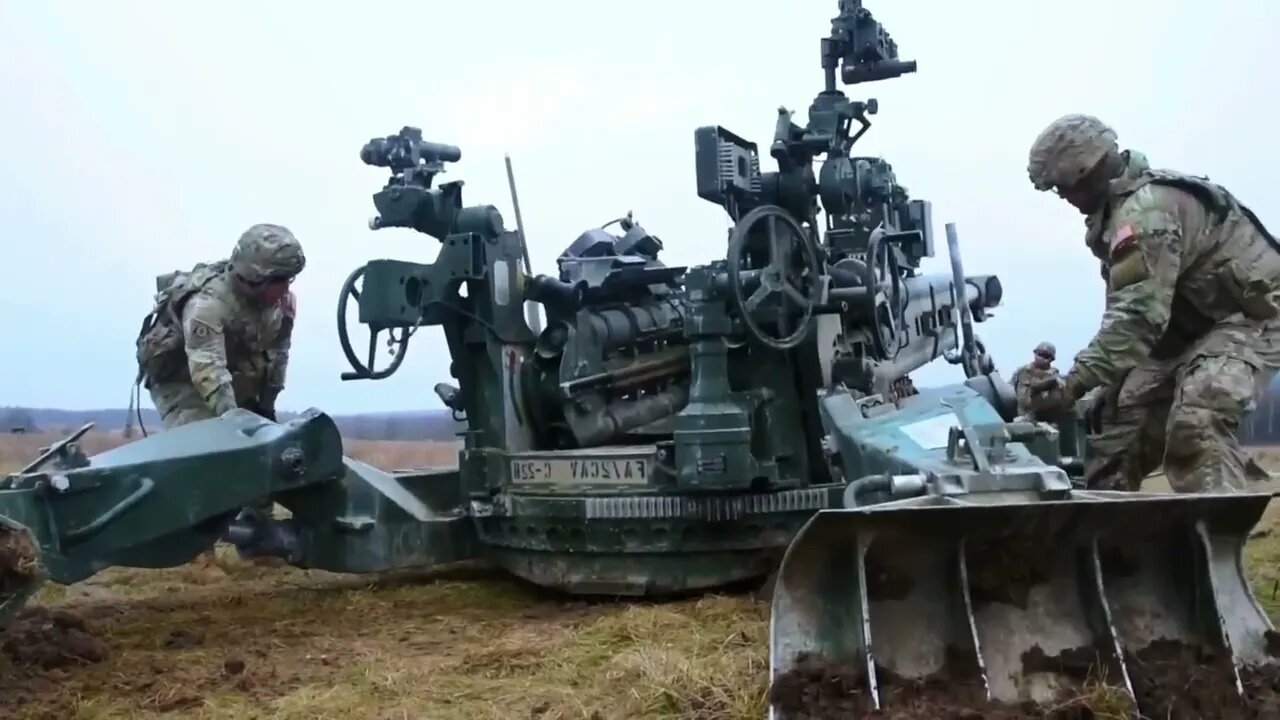Premium Only Content

HIMARS: The new U.S. rocket launchers in Ukraine
HIMARS: The new U.S. rocket launchers in Ukraine
The Ukrainians have a new weapon to sing about. Taras Borovok, the Ukrainian soldier who previously penned a viral musical tribute to the Turkish-supplied Bayraktar drone, recently released a new song paying tribute to the American supplied High-Mobility Advanced Rocket System — better known by its now-famous acronym.
“HIMARS! Our trusted ally from America is here. Do you want to meet him?” goes the catchy jingle shared last week on the Facebook page of the Ukrainian armed forces’ general staff.
Even by the standards of this social-media saturated war, the HIMARS is getting a lot of hype. A month ago, Ukrainian Defense Minister Oleksii Reznikov tweeted, “HIMARS have arrived to Ukraine. Thank you to my colleague and friend @SecDef [Defense Secretary Lloyd J. Austin III] for these powerful tools! Summer will be hot for the Russian occupiers. And the last one for some of them.”
So far, Reznikov’s excitement seems justified. Rockets fired from HIMARS have struck more than 30 Russian targets behind enemy lines in Ukraine, including ammunition depots and command and control posts. By all accounts, they’ve thrown Russian logistics into disarray and are slowing the Russian military’s advance in eastern Ukraine. The governor of war-torn Luhansk province has described the Russians as in “panic mode” over the HIMARS’ capabilities. One sign that the hype may be true: Russian Defense Minister Sergei Shoigu has ordered his forces to prioritize destroying them.
In recent days, Ukraine used HIMARS to strike a key bridge used by Russian forces to resupply the occupied city of Kherson in southern Ukraine. The strike was likely part of preparations for an upcoming offensive to retake the city, which was captured by the Russians in the early days of the war.
The U.S. has already sent 12 HIMARS to Ukraine, and Austin announced on Wednesday that four more are on the way. The U.K. has also sent three M270 artillery launchers — an older but compatible model — and Germany has committed several as well. The system has emerged as something of a litmus test for Western support for Ukraine. In a recent Washington Post column, defense columnist Max Boot argued that if the Biden administration were serious about shortening the war, it would “send 60 HIMARS to Ukraine.”
Part of the reason for all the HIMARS enthusiasm is that they’ve provided the first reasons for battlefield optimism for Ukraine and its allies in quite some time. Since early April, when Russian forces abandoned their ill-fated attempt to take Kyiv in order to focus on the eastern Donbas region, they’ve been making slow but steady progress, in large part because of their overwhelming advantage in heavy artillery. The arrival of the HIMARS is the first sign the balance in artillery may be shifting in Ukraine’s favor.
How much of a wonder weapon is the HIMARS? And might it really the turn the tide of the war?
What is a HIMARS?
The High Mobility Artillery Rocket System is more or less what it sounds like: A platform loaded with multiple rockets that can be fired in short succession. The HIMARS is a particularly sophisticated version, each carrying either one-half dozen guided rockets with a range of around 40 miles, or a single Army Tactical Missile System (ATACMS), which has a range of almost 200 miles. By contrast, the M777 howitzer cannon, one of the most advanced U.S. artillery pieces on the battlefield in Ukraine, has a range of less than 20 miles.
-
 27:37
27:37
pewculture
7 days agoThe I, Robot Gun Looked Cool—Until We Found Out What It Really Was - EP#23 - I, Robot
3.33K3 -
 56:00
56:00
Omar Elattar
9 months agoHow I Made $800M, Got Depressed & Now Spend $2M Per-Year On My Anti-Aging Health Routine!
7.43K -
 24:24
24:24
GritsGG
12 hours agoSpectating Random Solos with the Rank 1 Player - Pro Strategies!
3.39K -
 LIVE
LIVE
Lofi Girl
2 years agoSynthwave Radio 🌌 - beats to chill/game to
306 watching -
 9:27
9:27
MattMorseTV
2 days ago $17.85 earnedHe just lost EVERYTHING.
73.2K114 -
 7:10:39
7:10:39
MyronGainesX
1 day agoFormer Fed Explains Serial Killer Israel Keyes, Yahweh ben Yaweh, And The El Rukn Gang, And Police Shooting Reactions!
132K33 -
 4:22:33
4:22:33
Due Dissidence
13 hours agoGaza STARVATION Hits Tipping Point, Flotilla CAPTURED, Bongino BREAKS SILENCE, Maxwell MEETS DOJ,
53.5K127 -
 10:52:37
10:52:37
GritsGG
14 hours agoWin Streaking! Most Wins 3180+! 🔥
95.1K1 -
 3:01:03
3:01:03
This is the Ray Gaming
7 hours agoSunday Night LIVE | Rumble Premium Streamer
27.9K -
 2:42:31
2:42:31
Barry Cunningham
12 hours agoPRESIDENT TRUMP IS SAVING AMERICA ONE DEAL AT A TIME! UNBELIEVABLE!
93.1K53